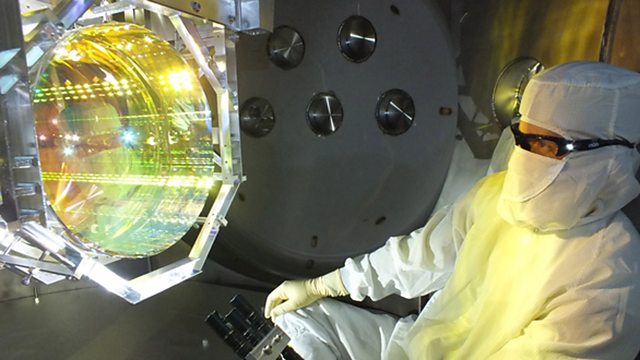
Gravitational Waves Detected
A century after Albert Einstein explained his General Theory of Relativity, scientists announce that they have found gravitational waves
The universe is silent no longer - physicists at the LIGO observatory have detected gravitational waves.
LIGO, the Laser Interferometer Gravitational-wave Observatory, with its giant laser beam arms totalling 5 miles across the remote Hanford desert, is the largest lab on the surface of the planet. It was constructed in the Columbia Basin region of south-eastern Washington specifically to detect gravitational waves - ripples in the fabric of space-time along with its sister detector in Louisiana.
First predicted a century ago by Einstein in his theory of general relativity, gravitational waves are produced by exotic cosmic events, such as when two black holes collide. Scientists have hunted for them for decades with increasingly sensitive equipment. The laser beam tubes of the observatory have now proved sensitive enough to detect the signal from deep space as small as a thousandth the diameter of a proton.
Claudia Hammond examines this week’s momentous discovery and we hear in detail from Aleem Maqbool who travelled to LIGO in Hanford just before the switch on last September to scrutinise the cutting-edge technology and aspirations of this “new ear on the universe” which has to be of almost unimaginable sensitivity to enable detection of some of the universe's most dramatic events and hear the universe in a whole new way.
(Photo caption: Inspecting LIGO's optics for contaminants © Advanced LIGO)
The Science Hour was presented by Claudia Hammond
Producer: Adrian Washbourne
Last on
More episodes
Broadcasts
- Sat 13 Feb 2016 09:06GMT����ý World Service Australasia
- Sat 13 Feb 2016 23:06GMT����ý World Service except News Internet
- Sun 14 Feb 2016 02:06GMT����ý World Service Australasia
- Sun 14 Feb 2016 11:06GMT����ý World Service except Australasia & News Internet
- Sun 14 Feb 2016 14:06GMT����ý World Service Australasia
- Mon 15 Feb 2016 06:06GMT����ý World Service South Asia
Podcast
-
![]()
Unexpected Elements
The news you know, the science you don't

